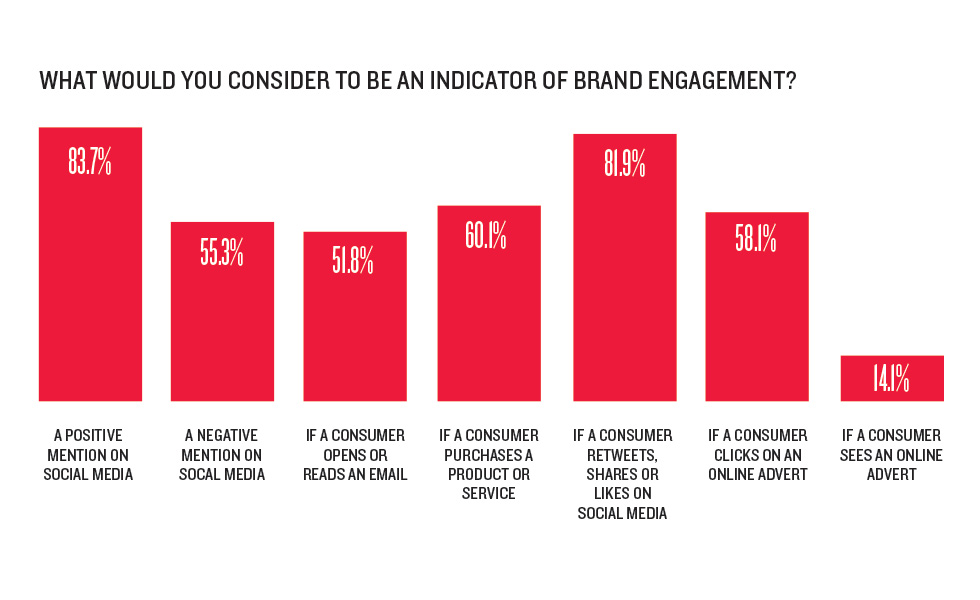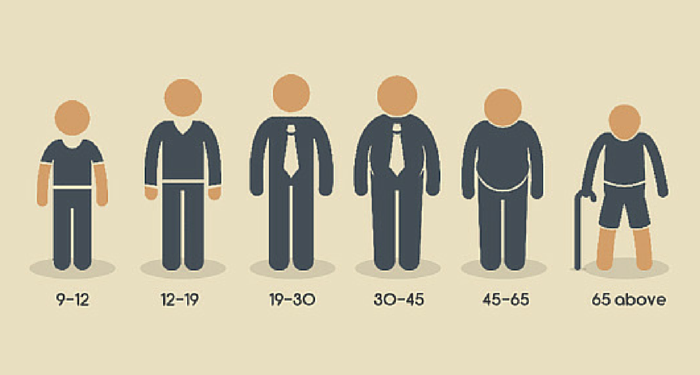How to Use Brand Positioning to Start your Brand Development
Today we are excited to have a guest blog from Lisa Overman, Director, Brand Strategy!
As a seasoned branding and marketing pro, I have been developing positioning statements for brands and companies for longer than I care to admit. Though if asked, I honestly could not have told you how “positioning statements” came to be so well-known and one of the most important marketing tools used today; that is until I read the article by Rance Crain, How Al Ries Positioned the Positioning Statement.
 Remember your high school pep rallies and games? The excitement of the competition, the players focused on the win and the fans uniting behind the team to cheer them to victory. That is what a positioning statement - it is a company’s mantra, rally chant, cheer to gather the teams and get everyone fired up. In short, it is the chance for a brand to shout to the world that it is the best in the business. Every brand, business owner, brand developer and marketer wants to have a positioning statement that serves this purpose, in addition to uniting all of the teams that support the brand behind a common goal.
Remember your high school pep rallies and games? The excitement of the competition, the players focused on the win and the fans uniting behind the team to cheer them to victory. That is what a positioning statement - it is a company’s mantra, rally chant, cheer to gather the teams and get everyone fired up. In short, it is the chance for a brand to shout to the world that it is the best in the business. Every brand, business owner, brand developer and marketer wants to have a positioning statement that serves this purpose, in addition to uniting all of the teams that support the brand behind a common goal.
Ries alludes to companies needing an aligned-team approach when he describes the differences between the creative team and the marketing team, and who owns the foundation of kicking off that next big idea. Internally, your team has to be rowing in the same direction with consensus agreement that this is the best direction for the brand. If you can’t rally a sense of belief from your own team, how can you expect consumers to do the same?
That is why creating a strong positioning statement is such an important starting point. It will lay out some of the key aspects of the brand building process, pointing out the end goal, the basic characteristics or big idea, and some of the steps to get the brand to the top.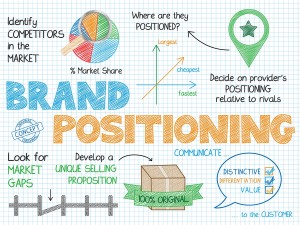
So how does a positioning statement come to fruition? Ries provides a great example when discussing working with Uniroyal on their first pass at a positioning statement. In his example, he discusses how the team made the unified choice to position the brand as the “technology leader in the rubber industry.” He then points out how the brand needed to convince the consumer of the validity of this statement, answering questions such as how does Uniroyal back up its claim as the leader in the space and how is leadership measured, while imploring the team to provide concrete reasoning to support the statement.
The goal of what Ries was doing was to let the Uniroyal brand team know that on its own, the statement wasn’t strong enough or believable enough to be the “rock” of the brand.. The concept was there, but it needed something credible, unique and stronger than what every other competitor was saying. Using facts to support their next positioning statement, Uniroyal showed their differentiation and outlined how they stood apart from the competition: “Uniroyal holds more patents than any other rubber company.” Simple, concise and clear, and allowing for the consumer to connect the dots between their “best of” statement and their leadership claim.
So the next time you are searching for that perfect, solid positioning statement and feel like you are hitting your head on a rock, focus on finding the words and statements that sum up that big idea. Then, explain what that big idea has to offer and what makes it different from the competition. In doing so, you can ensure that your positioning statement is the cornerstone for your next big idea that turns into your brand, and then ultimately become the center for all your sales and marketing efforts.
Image Sources:
Image 1
Image 2
A Cup of Sugar and Branding Advice - Two Things You Can Get From Your Neighborhood
What if I told you that organizations and products across the marketplace could take branding advice from a collection of neighborhoods in Nashville?
After the confused looks and wondering if I’ve lost my mind, I’d tell you that these neighborhoods have identified two of the main tenants in branding, and have put the full force of their efforts behind raising the bar within their market.
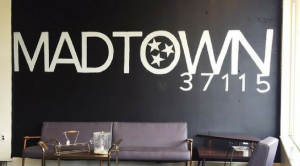 Collectively, the geographic areas involved make up the city of Nashville. Which in of itself is a strong brand and a well-known place. People are proud to identify themselves with the city as a whole and everything it offers. But within Nashville resides a number of smaller, more geographically-focused neighborhoods, each offering its own unique elements and characteristics.
Collectively, the geographic areas involved make up the city of Nashville. Which in of itself is a strong brand and a well-known place. People are proud to identify themselves with the city as a whole and everything it offers. But within Nashville resides a number of smaller, more geographically-focused neighborhoods, each offering its own unique elements and characteristics.
In line with a recent trend in demographic identity, the residents of these areas are beginning to attach their neighborhood with their own personal brand. In doing so, they have hit a sweet spot in branding, having achieved two foundational achievements in building a successful brand.
First, they’ve established strong brand identity, one that is built on its own characteristics while at the same time creating emotional connections with their audience. There is a natural, built-in connection with one’s home and local area, and to create a brand built on this gives the neighborhood instant brand ambassadors.
Willing to stake their own personal identity on their neighborhood brand, these residents boost its strength and increase the differentiation of the brand amongst its peers. As Nashville designer Tim Park said, “"I think the people here are so dang proud of their neighborhoods that they want to shout it to the rooftops.”
Brands everywhere can often only dream of possessing such loyalty and enthusiasm, where their audience not only relates internally, but invests their own effort to help spread the brand outside of its initial reach.
Additionally, these brands have eased the ability to spread the brand through well-thought-out, creative names and logos. In addition to all of the well-established reasons why a visual and verbal brand is vital for success, these elements serve as a resource for the aforementioned brand ambassadors. They may have all the enthusiasm in the world to spread the brand, but the addition of tangible brand elements makes it that much easier.
These neighborhood names and logos serve another purpose as well – they all highlight what makes the area unique. They serve as conversation starters and sources of information that further increase the presence of the brand.
For instance, the logo for the Hillsboro-West End neighborhood in Nashville showcases well-known landmarks within its borders. Visitors viewing the logo for the first time are immediately  informed that the neighborhood boasts a number of famous places of interest, while also establishing where in the city the neighborhood resides, an important piece of information for any place.
informed that the neighborhood boasts a number of famous places of interest, while also establishing where in the city the neighborhood resides, an important piece of information for any place.
This is a lesson that can be transferred into a number of branding spaces. When creating a new name or logo, look at what makes your brand stand out – how can these two elements tell the story of your brand? Don’t waste the opportunity and create a name or logo where the connection has to be explained to the audience.
So the next time someone says that their brand was influenced by a place called “Madtown” or a logo showcasing a prominent street sign, take their word for it. They might just be on to something.
Learn more about building your best brand portfolio strategy by downloading this FREE webinar, "Identifying The Opportunities In Your Brand Portfolio - Are You Capitalizing On Every Potential Business Opportunity Your Portfolio Provides?"
How to Attach Your Brand to Moments in Consumers' Lives
A recent Adweek article discussed how brands are using non-traditional marketing and advertising strategies to target students going back to school, especially those in college.
One key takeaway from the article is how these brands are using their advertising efforts in part to align themselves with specific moments within a student’s time at college. As seen in the image below, such brands as Tide are looking to become the brand connection with moments like the first time a student does their laundry.
 There have been many words written and discussed about the importance of emotional connection in branding, where brands set forth a goal to establish an emotional bond with a consumer over time. But these brands are going even bigger, looking to not only fill the space with a consumer in the moment, but also needing to create the inclination to connect a brand to that moment.
There have been many words written and discussed about the importance of emotional connection in branding, where brands set forth a goal to establish an emotional bond with a consumer over time. But these brands are going even bigger, looking to not only fill the space with a consumer in the moment, but also needing to create the inclination to connect a brand to that moment.
Most consumers don’t naturally have a specific brand in mind when they are performing normal, everyday tasks. You need to load the dishwasher? Your mindset is normally more on the task itself than what brand dishwasher soap you will need to buy.
This is where moment branding does the heavy lifting.
As previously mentioned, the first goal of successful moment branding is to establish the brand connection. Make your brand THE first thought of an individual in the moment, surpassing the general, task-focused mindset that naturally exists. For instance, the “defining moments” image connects “signing first lease” with Citi. For the majority of first-time home owners, their mind is full of thoughts of down payments, mortgage fees, interest rates, etc. In other words, far from thinking of what brand they can leverage.
By positioning themselves as the expert/top brand in the space, Citi can move themselves up the mindset pecking order, grabbing a portion of the thought process, and in turn raising the profile of their overall brand.
A level of emotional connection cannot be ignored, however. This is the bridge from moment to brand. It’s not enough to simply associate yourself with a task such as laundry, but you must become that moment’s iconic brand. Settling for second place only ensures that your competition will reap the benefits of the moment. It takes work to make the moment brand-worthy, there isn’t enough available to hope that the consumer considers all of the brand options.
We all remember our first time cooking in the dorms, and at the same time, can remember what our first requirement for deciding what to cook – ease. College students with limited culinary skills and equipment are less concerned with the intricacies of cooking; they want something easy and fast. Kraft, in their moment branding efforts, saw this as an opportunity to connect. Their “Easy Mac” and other dorm-friendly options were situated ideally for the audience and the moment. Therefore, Kraft positioned these brands as the go-to for college chefs.
Done successfully, moment branding can have long-lasting and wide-ranging impacts on a brand and on consumer mindsets. Our lives are full of both significant and mundane moments, each of which possesses the potential for brand connection. Once we begin associating specific brands with each moment, these brands will have one less person to try and market to, as they have become synonymous with our lives.
Learn more about building your best brand portfolio strategy by downloading this FREE webinar, "Identifying The Opportunities In Your Brand Portfolio - Are You Capitalizing On Every Potential Business Opportunity Your Portfolio Provides?"
Patience is a (Branding) Virtue
“He that can have patience can have what he will.”
While many don’t consider Benjamin Franklin, the source of this quote, to be a master in branding and brand strategy, but the inventor of bifocals touched on a very important brand lesson when he spoke these words.
Simply put, brand development is a practice in patience and the ability to stay the course. When creating a brand, especially during the strategic development phase, the end goal may seem a million miles away. Along those lines, there may be some bumps in the road on the way to success, which will undoubtedly cause some to begin wondering if and when the strategy should be abandoned.
That time should be the last thing on the mind of those working on the brand’s development, as they should instead be focused on staying the course, allowing the brand time to build and grow into the final draft that everyone is working toward.
And while it is marked with very specific, brand-boosting moments such as logo reveals and brand name launches, it is important to not get sucked in to the mindset that these momentary brand bumps are a long-lasting sign that the brand has reached is pinnacle.
In a recent article, Fred Moore touched on this very topic, discussing how, despite the normal expectation of short-term success, establishing a strong brand isn’t a quick fix:
“I tell clients that based on my experience, it takes about three years for a brand to become vested in the minds of the customer,” he says. “Clients tend to feel pressured to produce more short-term results. It is your job to keep the client ‘on strategy’ for the sake of their brand.”
Moore’s mention of consumer mindset is a key point in why brand patience is crucial. The marketplace is filled with similar brands to yours, and as such, it can be easy for consumers to blend them all together or get confused to which brand is which – at least at first. For those brands that have a solid foundation in place and have successfully created a brand that differentiates itself form the competition, finding a space in the consumer consciousness will be achieved quicker, albeit still not right away.
Touching on Franklin’s quote one more time, we see that he ends it with “can have what he will.” In other (branding) words, patience also allows for a brand development that shoots even higher than a short-term-focused brand. if you are in the mindset that time is your friend , not enemy, your brand will have more time to really expand its definition of success.
So when starting to develop a brand, be sure to always keep one eye toward the future, as that is where you will find true brand success.
Learn more about building your best brand portfolio strategy by downloading this FREE webinar, "Identifying The Opportunities In Your Brand Portfolio - Are You Capitalizing On Every Potential Business Opportunity Your Portfolio Provides?"
Brand Engagement in an Ever-Connected Marketplace
 In the not-so-distant past, brand engagement was, like most media and advertising efforts, easily calculated, tracked and controlled. Advertisements were seen for a specific time frame by a set number of consumers, products were featured through in-person demonstrations in stores and malls, where the brands themselves drove the interaction and could control when and how they were perceived.
In the not-so-distant past, brand engagement was, like most media and advertising efforts, easily calculated, tracked and controlled. Advertisements were seen for a specific time frame by a set number of consumers, products were featured through in-person demonstrations in stores and malls, where the brands themselves drove the interaction and could control when and how they were perceived.
This is no longer the case. Today, brands are faced with both the ease and the issues that come with online brand engagement opportunities, where measurement is tracked via software programs and engagement rates are dependent on the consumer.
Marketing Week recently released the results of a survey on how companies indicate brand engagement. The results are telling – all seven of the top results are tied back into online and social media marketing, where the engagement is indicated by an action taken on the part of the consumer.
Not only does this indicate a shift in the power structure for brand engagement, but it also shows how frequent these engagements can take place. Social media mentions don’t follow a schedule – they can occur 24/7/365, just like email opens and online advertisement clicks. Additionally, the multi-faceted engagement opportunities provide for one consumer to engage a brand through multiple channels within a short time frame.
One of the main benefits of this constant connectivity resides with those looking to improve their brand sentiment. Brand engagement is often the fastest way to change perception about a brand, especially with individual users. Therefore, in a day and age when these same users have the opportunity for countless brand engagements online in a brief amount of time, therein lies the opportunity to turn negative sentiment into positive quickly through on-point and successful brand engagement strategies.
And yes, this same principle can have the opposite impact. Just as a brand can take a step forward in the brand perception department, so too can a brand take ten steps backward by virtue of a brand engagement misstep.
For brands, these changes result in a growing need for consistent brand performance, across all channels for an extended period of time. When the consumer controls the timing of engagements, the brands can’t let their guard down, allowing for an interaction to occur when they aren’t at their best. Whether this is an ill-advised social media post, a website issue, a less-than-perfect email campaign, or any other action that leaves the door open for negative engagement, brands who succeed in this area of their strategy are constantly vigilant in this area.
Learn more about building your best brand portfolio strategy by downloading this FREE webinar, "Identifying The Opportunities In Your Brand Portfolio - Are You Capitalizing On Every Potential Business Opportunity Your Portfolio Provides?"
3 Ways a Strong Brand Can Bring Your Organization Together
Not only can a strong company brand drive consumer and market success, but it can also have a positive impact from within the office walls. Whether it’s through initial brand development or a rebranding effort, the creation and implementation of a strong brand will have a unifying effect on the organization as a whole.
Although often overlooked, here are three ways a strong brand can serve to make your organization stronger and more successful:
- Unite behind a common goal
A strong overall brand should include the definition of what a brand stands for and their overall mission – what success means to them. For employees, the knowledge that their work and their role in the organization has a definite end goal and purpose will allow for a more unified and inspired workforce. Organizations thrive when everyone is following a similar path and know what success looks like, and this aspect of a strong brand gives the employees just that.
- Something to write home about
Never underestimate how pride can strengthen an organization. Pride in the product, pride in the people, and yes, pride in the brand. Whether it’s a logo is a visual gem, or a new brand name that encompasses perfectly what the organization represents, when an organization is made up of people who are proud of the brand and feel good about connecting themselves with that brand, the entire organization benefits. Keep this in mind when creating the entire brand, not just these elements. Employee feedback and input can be a valuable piece of the brand development process, providing insights into how potential brands would go over within the organization.
- Keeping a steady stream of friendly faces
It’s not enough to bring in outstanding talent to an organization – it’s also vital to keep those talented employees within the company for a long time. In today’s fast-paced employee world, where job changes are commonplace and longevity within one organization is becoming more rare, potential and current employees care about the organizational brand. The best of the best have a number of options available for their services, and often a choice comes down to the details – that’s right, such as a strong brand. Another benefit is the brand can be shown off and exhibited early on in the hiring process, from consistent email signatures to an office space that carries and shows off the brand.
Organizations face a multitude of attention-needing issues and problems each day, that take time and effort to work on. They are also tasked with keeping an eye on what’s coming next, to properly prepare the organization for future success. They need assistance in whatever area possible, and a strong brand can be the ticket for organizational unity and consistency, freeing up a crucial aspect of managing your company.
Finding the Connection: How a Brand Name Can Help Tie Your Brand Together
Congratulations, you’re a parent! Bringing to life a pristine new entity created from scratch, it’s your brand. And like all things birthed into magnificence and destined to prosper, it needs a name.
Unfortunately, what you might be coming to realize is there’s no baby book to scour or great-grandparent to take after when shaping the signature alias of your newborn brand. The world is at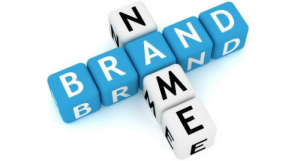 your fingertips, and you might just want to coin a term that is cool and memorable. But when namer’s block kicks in and you are staring at a trash can full of crumpled papers of fizzled ideas, it’s probably because you’re brainstorming too broadly.
your fingertips, and you might just want to coin a term that is cool and memorable. But when namer’s block kicks in and you are staring at a trash can full of crumpled papers of fizzled ideas, it’s probably because you’re brainstorming too broadly.
There’s a seemingly infinite and daunting list of combinations in lettering and verbiage to craft your brands name if you wander into the process unintentionally. The alphabet is long and the dictionary is thick - you’ll be doodling for decades if your only filtering criterion is sounding “cool”. Your jump-off point needs be refined and specific, and it can start with your brand attributes.
Sounds redundant right? Use qualities of something to name it - how original! But, hear me out.
The mere fact that brand names can (and often do) have some connection back to the product, service or organization they represent is often unknown to their audiences. For instance, Aldi derives from the German word for discount. Durex was made to be a mashup between “durable, reliable, excellence”. Nike was the name of the Greek goddess of victory. These brand attributes were transformed into the names that the audience knows and loves.
These connections, however indirect, are a powerful example of branding. At the surface, a brand name is the biggest single brand representation out there, often living as the first impression and the aspect that is most likely to ingrain itself in the memory of the consumer. Because of this, any additional tie back to your product that can be evoked from the name provides an additional boost to the brand equity, in such that if the name becomes commonplace on the market, the connection will become more obvious, boosting the ease of memory for your brand.
 Additionally, creating a name with a connection shows a sense of purpose in your brand development. Respect is given to brands who are seen as well-thought-out and deliberate, as opposed to brands that come out of nowhere and look to have little background work given before hitting the market. If you can show that your brand name went through an extensive process and was developed by experts within the branding space, it shows the audience the importance given to the brand. They will then feel more confident connection the quality of the brand work with the quality of the overall brand product or organization.
Additionally, creating a name with a connection shows a sense of purpose in your brand development. Respect is given to brands who are seen as well-thought-out and deliberate, as opposed to brands that come out of nowhere and look to have little background work given before hitting the market. If you can show that your brand name went through an extensive process and was developed by experts within the branding space, it shows the audience the importance given to the brand. They will then feel more confident connection the quality of the brand work with the quality of the overall brand product or organization.
It is likely that customers will be oblivious to your uniquely crafted backstory, and that is okay. You will join the club of countless brands whose name and logos have narratives that people will never read. But the end result will be a unique sound and a better understanding of all that makes your newborn so special. Welcome to the world!
Image Sources:
Image 1
Image 2
How to Ensure Smart Branding Evolution
If you’ve been walking almost anywhere outside the past few weeks, you’ve undoubtedly either seen or almost run into someone on a beeline trek with their head in their phone, searching for a nearby Pokémon character. The Pokémon Go craze is in full force – it’s everywhere you look in real life, and now is making its way into the business world. Brands are using the phenomenon in their marketing, advertising and product development decisions, hoping to ride the coattails to success.
But some brands are still standing on the sidelines and out of the fray. Their brands are uninfluenced by the latest sensation to grab the public’s attention. Instead, they are hoping to stand out by 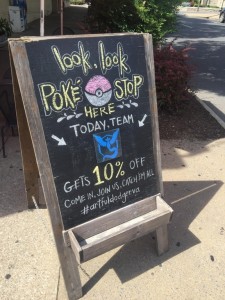 standing out – a strategy of being unique doing the very things that were commonplace a month ago.
standing out – a strategy of being unique doing the very things that were commonplace a month ago.
From a branding standpoint, there is a definite risk involved here. When brands don’t latch onto a trending topic or event, there are going to be those in the marketplace who will see this as being out of touch or having an inability to adapt. These brands will reap the benefits of those caught up in the mass hysteria, while turning their nose at the brands that aren’t playing the game.
However, one of the most sought-after brand characteristics is stability, and these brands are showing the have it. Staying true to themselves, trusting in their brand strength, staying the course in their brand persona – these are just a few of the nails they are hitting right on the head when it comes to building a strong brand.
Now, this isn’t to say that every new successful trend should be avoided at all costs by strong brands. There are some that come around that are perfect fits and should be capitalized upon. But the distinction lies in the fit – change for the sake of change and being “hip” just because everyone else is doing it is a one-way ticket to weakening your brand.
Being a strong brand isn’t synonymous with being rigid and unwilling to change; in fact, it should be flexible, providing room to shift and shape as time passes. It’s one of the hallmarks of long-lasting brands. The marketplace changes, consumers evolve, and those that survive evolve right along with them – to a point.
They know that there is a sweet spot in their brand landscape where they are best set up for success – their “home” full of ideal audience targeting, on-brand messaging and brand elements that fit ideally into their strategic direction.
For strong brands looking to evolve, defining “home” is crucial. Staying within themselves and not going outside of their brand’s comfort zone will allow for evolution without compromising the brand. By keeping this in mind, they can ensure their brand is up-to-date with the current market landscape while simultaneously allowing for it to stay strong and consistent.
So next time you see a brand advertising their connection with Pokémon Go right next to a brand who has chosen to stay out of the trend, take note of how their brand played into the decision, and whether they are staying “home” with their choices.
Image Sources:
Image 1
Image 2
Learn more about building your best brand portfolio strategy by downloading this FREE webinar, "Identifying The Opportunities In Your Brand Portfolio - Are You Capitalizing On Every Potential Business Opportunity Your Portfolio Provides?"
How to Build Your Brand Portfolio Using a Flagship Brand Strategy
"Strategically, Coke and Coke Zero Sugar are ham and egg. It's absolute dovetailing. I always use the analogy of tea: We either have it with our without sugar. It's Coke, with or without sugar,"
This quote, from Coca-Cola Great Britain marketing director Bobby Brittain in a recent announcement that starting this week in Great Britain, Coke Zero will be reformulated and rebranded as Coca-Cola Zero Sugar, highlights an interesting trend in brand portfolio strategy, where a classic, flagship brand becomes the comparison point to a number of secondary brands within the portfolio. With this strategy, the hope is that consumers will connect the two brands even more than before, boosting Coke Zero while also highlighting its differences from Coke.
When you have an iconic brand already in your portfolio, along the lines of what the Coca-Cola Company has with its namesake product, the decisions in regards to complementary brands can have a similar strategic direction.
The brand equity built up from these brands can be a beneficial foundation to stand on when building new complementary brands, especially if those share a commonality with the iconic brand, such as a similar name or logo.
Brittain highlighted the goal of this brand strategy shift and pointed out that using Coke as the standard-bearer for the entire brand portfolio has long been a point of emphasis.
"We're using Coke very much as the gold standard, the red standard. We're paying Coke the ultimate compliment because we are saying it tastes more like Coke, looks more like Coke, and we're always using Coke as the point of comparison," Brittain said.
This is especially interesting from a brand strategy standpoint because Coke Zero is not a new brand – it has the ability to stand on its own to a certain point. The Coke Zero brand has been on the market for a number of years, finding success and making an impact on the overall brand portfolio.
However, such is the strength of the Coca-Cola brand that to increase the success of other brands, their strategy is now focused on becoming more like the flagship product, and instead of branding them as their own entities, they are becoming more of an offshoot of Coke.
The company is also playing up this connection to its iconic imagery with the “one brand” strategy it recently began rolling out. With this strategy, the iconic red disk that has long signaled the Coca-Cola brand will now be featured across the entire portfolio, with the individual products now sharing a similar look but with minor tweaks to identify each one.
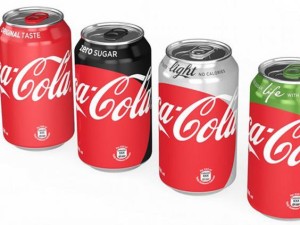 These two strategies are taking two of Coca-Cola’s most recognizable brand elements – the name and the red disk – and using them as “boosters” for its complementary branding. For many brand portfolios, this strategy is a far-off dream, only available if and when their main brand achieves a level of notoriety and positive brand connotation where it can be enabled to carry over into the space of additional brands.
These two strategies are taking two of Coca-Cola’s most recognizable brand elements – the name and the red disk – and using them as “boosters” for its complementary branding. For many brand portfolios, this strategy is a far-off dream, only available if and when their main brand achieves a level of notoriety and positive brand connotation where it can be enabled to carry over into the space of additional brands.
So how can those without a global icon at the helm of the brand ship take advantage of whatever boost may come from its main brand? The answer may not be all that different from Coca-Cola’s strategy.
As mentioned before, the company is using Coke as the starting point for its complementary brand descriptions. While this obviously has a positive effect on the secondary brands, it also raises the profile and positivity of Coke itself. If a consumer, who may be on the fence about a product, sees that a company is using a direct comparison between brands to highlight quality, then it is safe to assume that the primary brand represents excellence.
So if your primary brand isn’t quite at Coca-Cola levels, this comparison to other brands, especially of those find great success, can raise its standing in the consumer mindset as well. The benefits really do go both ways.
Image Sources:
Image 1
Image 2
Learn more about building your best brand portfolio strategy by downloading this FREE webinar, "Identifying The Opportunities In Your Brand Portfolio - Are You Capitalizing On Every Potential Business Opportunity Your Portfolio Provides?"
Speaking Their Language: 4 Tips in Branding for an Age Group
If a company’s message falls down in the forest with no one to hear it, did it really even make a sound?
Just like the lonely tree tipping, a brand irrelevant to its audience’s age group is non-existent. Creating a desirable brand means creating an observable one, and sometimes that means translating your message to match the desires of those you want to buy in.
The major rifts in the mindsets between age groups make this translation a necessity. A 10-year-old and a 40-year-old might both want Sharpies, but the 10-year-old will draw dragons in art class, and the 40-year old will label his Tupperware. To prevent your business’ generation gap from showing, here are four tips to guide branding for your target age group.
- Find the listeners, and those you wish were.
Know the ages of those following your company’s story and responding to your brand messaging. The scope of people you’re actually reaching shows how much work you’re going to have to do. Use customer analytics to see what ages have their eye on your business, and then decide if you want to focus in on a group of them. Know the reason a target group might want what you’re selling, and why they’re different from who’s currently buying. Once you find out what matters to them, you can show why your brand matters too. - Use what you’ve got going for you.
Hey, it’s worked so far right? You don’t have to reinvent the wheel on your brand in order to reach a specific age group; you just have to repackage it. Take what you have and put a new spin on why it's necessary to your demographic. Use the benefits you already know your brand has to offer and create specific connections in the reasons those benefits resonate with your target market. Estee Lauder was long known as a cosmetic brand for women 40-60 years old before they made Kardashian family member Kendall Jenner an official spokes-model. The brand instantly became teen friendly, without changing or adding a single product. You won’t hear this often in the business world, but find the “Kardashian” your brand needs. - Make less, more.
Make reaching the smaller sample group better than reaching the masses by presenting your brand more efficiently. Get specific, and tailor your message in a way that couldn’t be done for a catch–all group to make possible losses worth it. The criteria that motivates customers to buy ranges far and wide between ages. Once your ages get specific, the analysis of the criteria that matters to the desired age group will be more relevant and your tactics will be more successful. Sometimes effective brand strategy means making some cuts in the people groups you care about reaching. What good is a big audience if your message is not relevant or made specifically for anyone in it? - Don’t forget the other stuff.
Have you ever heard the phrase “age is just a number?” No brand can rely on one key component of a consumer’s identity to define all of their behavior. Tune in and target age groups you want to reach but leverage your strategies with the importance of other key demographics. Gender, race, socio-economic status, lifestyle and location can all make or break whether your message will be received.
Don’t let the appeal of your brand suffer due to information ill-communicated between ages. Once your brand finds its own crafted voice that speaks right into its targets ear, it will flourish stronger than yelling at the whole world. Make your sound count, just in case your company’s message ever falls down in a forest.
Learn more about building your best brand by downloading this FREE webinar, "Identifying The Opportunities In Your Brand Portfolio - Are You Capitalizing On Every Potential Business Opportunity Your Portfolio Provides?"


